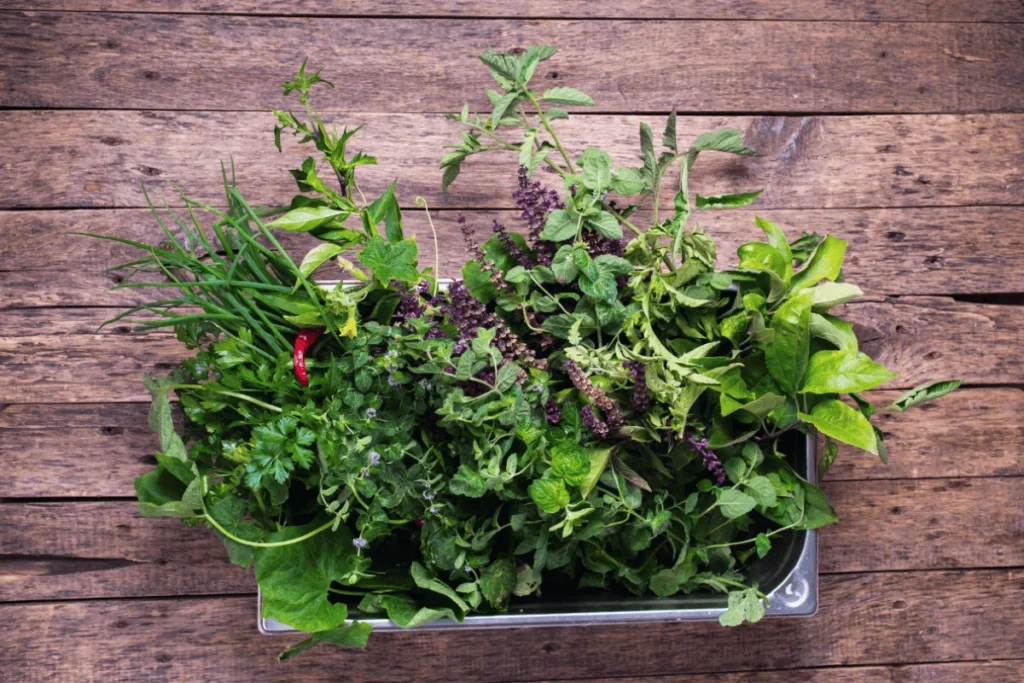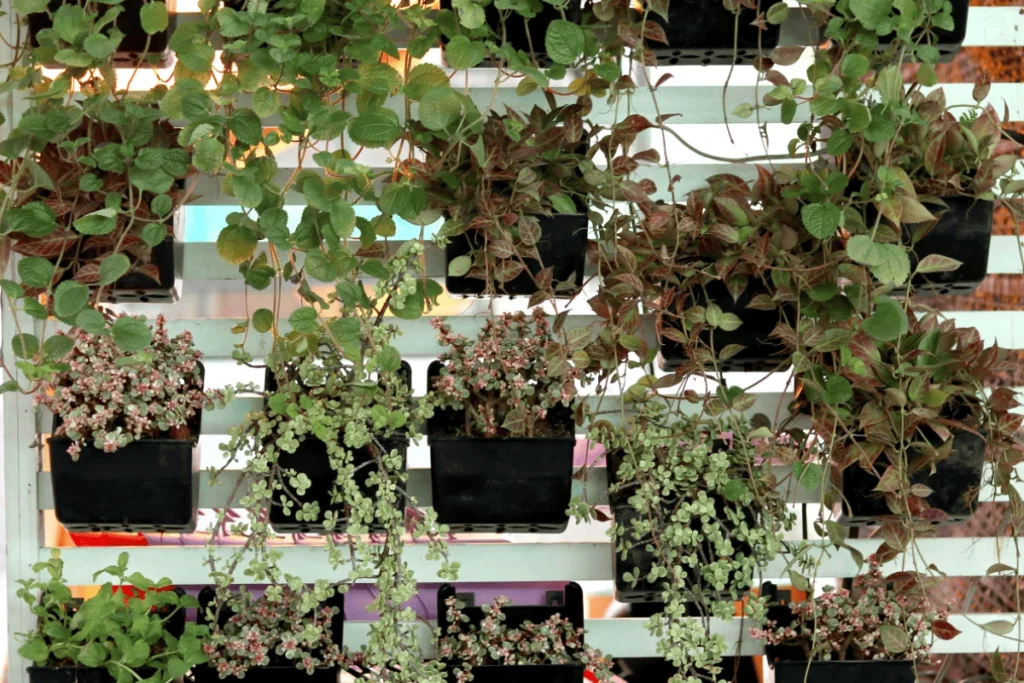Bring life to your home with a fresh herb garden.
Transform your home into a green oasis with an indoor vertical herb garden. This innovative gardening solution allows you to grow fresh, flavorful herbs year-round, even in small spaces.
With the right setup and care, you can enjoy a thriving herb garden that adds beauty and functionality to your indoor environment.
Have you ever dreamed of having fresh, aromatic herbs at your fingertips while cooking your favorite dishes? Indoor vertical gardens make this dream a reality. With minimal space and effort, you can enjoy vibrant, flavorful herbs all year round.
Whether you’re a seasoned chef or a beginner gardener, this guide will help you choose the best herbs for your indoor vertical garden and keep them thriving.
Why Grow Herbs in Indoor Vertical Gardens?
Indoor vertical gardens aren’t just practical; they’re transformative. Here are some reasons why you should think about creating one:
- Convenience: Imagine harvesting fresh herbs straight from your wall for your meals.
- Space-Saving: Perfect for apartments or homes with limited space, vertical gardens utilize unused wall areas.
- Aesthetic Appeal: Lush greenery adds vibrancy and life to your indoor environment.
- Eco-Friendly: Reduces dependency on store-bought herbs, minimizing packaging waste.
Top Herbs for Indoor Vertical Gardens

Choosing the right herbs is essential for a thriving vertical garden. Below are the best herbs to grow indoors, along with their care requirements:
1. Basil
- Light Requirements: Bright, indirect light or 6–8 hours of sunlight.
- Watering: Keep the soil evenly moist but avoid sogginess.
- Uses: A must-have for Italian dishes, pestos, and salads.
2. Mint
- Light Requirements: Thrives in moderate light and tolerates low-light conditions.
- Watering: Requires consistently moist soil.
- Uses: Perfect for teas, mojitos, and desserts.
3. Parsley
- Light Requirements: Prefers bright, indirect light or partial shade.
- Watering: Water when the topsoil feels dry.
- Uses: A versatile garnish for soups, sauces, and stews.
4. Thyme
- Light Requirements: Bright light, ideally near a south-facing window.
- Watering: Let the soil dry slightly before watering again.
- Uses: Great for seasoning meats, roasted veggies, and stews.
5. Chives
- Light Requirements: Moderate to bright light is ideal.
- Watering: Keep the soil consistently moist.
- Uses: Adds a mild onion flavor to salads, dips, and baked dishes.
6. Cilantro
- Light Requirements: Prefers bright light but tolerates partial shade.
- Watering: Keep the soil evenly moist.
- Uses: Essential for salsas, curries, and garnishes.
7. Rosemary
- Light Requirements: Needs 6–8 hours of direct light daily.
- Watering: Allow the topsoil to dry between waterings.
- Uses: Ideal for meats, breads, and infused oils.
8. Dill
- Light Requirements: Bright, indirect light.
- Watering: Maintain the soil with a light moisture level, avoiding excessive wetness.
- Uses: Perfect for fish dishes, pickles, and fresh salads.
9. Oregano
- Light Requirements: Requires full sun or strong grow lights.
- Watering: Allow the soil to become slightly dry before watering again.
- Uses: A staple in Mediterranean and Italian cuisine.
10. Lemon Balm
- Light Requirements: Thrives in bright, indirect light.
- Watering: Keep the soil consistently moist.
- Uses: Adds a refreshing citrusy flavor to teas and desserts.
Tips for Growing Herbs in Indoor Vertical Gardens
For a step-by-step visual guide to setting up your indoor herb garden, watch this helpful video. It covers essential tips on choosing herbs, optimizing lighting, and maintaining a thriving vertical garden indoors:
- Choose the Right Structure:
- Use wall-mounted planters, pocket panels, or freestanding frames.
- Ensure the structure is sturdy and allows for easy access to watering and pruning.
- Optimize Lighting:
- Position your garden near a south-facing window for maximum sunlight.
- If natural light is insufficient, install full-spectrum LED grow lights.
- Use High-Quality Soil:
- Select a lightweight, nutrient-rich potting mix.
- Add compost or organic fertilizers to enrich the soil and boost growth.
- Water Wisely:
- Check soil moisture regularly to avoid overwatering.
- Use a watering can with a fine spout for accurate watering.
- Prune and Harvest Regularly:
- Trim herbs frequently to encourage bushy growth.
- Harvest a few leaves at a time to avoid stressing the plants.
- Monitor Plant Health:
- Stay alert for common pests such as aphids and spider mites.
- Use natural remedies, such as neem oil, to combat infestations.
Creative Ideas for Your Herb Garden

Turn your vertical garden into a statement piece with these creative ideas:
- Herb Wall Art: Arrange plants in patterns for a decorative and functional touch.
- Chalkboard Labels: Add chalkboard tags to your planters for an elegant, customizable look.
- Hanging Jars: Use glass jars suspended from hooks for a modern, minimalist aesthetic.
- LED Accents: Install soft LED lights to highlight your garden and create a cozy atmosphere.
If you’re looking for even more inspiration to create the perfect vertical garden and improve the growth of your herbs, be sure to check out article on 9 DIY Vertical Gardens for Better Herbs. There, you’ll find amazing tips to maximize space and productivity in your garden, along with practical ideas to transform any corner of your home into a green oasis.
Benefits of Growing Herbs Indoors
An indoor vertical herb garden offers more than fresh ingredients it transforms your living space.
- Fresh Flavors: Elevate your meals with garden-fresh herbs.
- Cost Savings: Save money by reducing reliance on store-bought herbs.
- Improved Air Quality: Plants filter pollutants and increase oxygen levels in your home.
- Aesthetic Appeal: Greenery adds life, vibrancy, and a sense of calm to your indoor space.
If you’re interested in growing herbs that can also be used for medicinal purposes, be sure to check out our article on Medicinal Herbs for Vertical Gardens: Grow Your Own Natural Remedies. There, you’ll discover how to grow potent herbs to naturally and effectively address various health conditions, providing extra benefits for your overall well-being.
Conclusion: A Garden Within Reach
Creating an indoor vertical herb garden is a simple yet rewarding way to enjoy fresh, homegrown herbs year-round. With the right structure, lighting, and care, you can transform a blank wall or small space into a thriving herb oasis.
Whether you’re looking to enhance your cooking or add a touch of greenery to your home, starting your indoor herb garden today will bring flavor, freshness, and beauty into your life.
Start now and enjoy the endless possibilities of growing your own herbs indoors!

